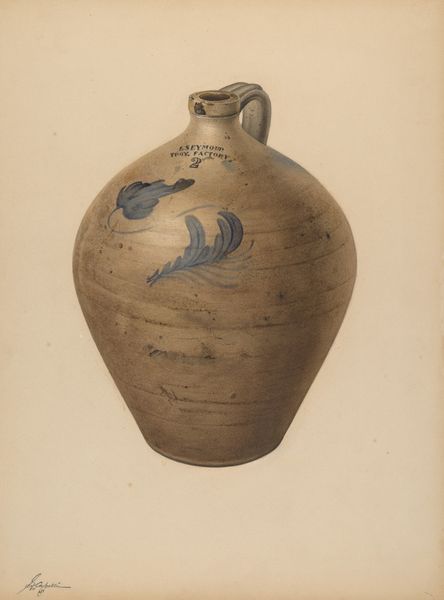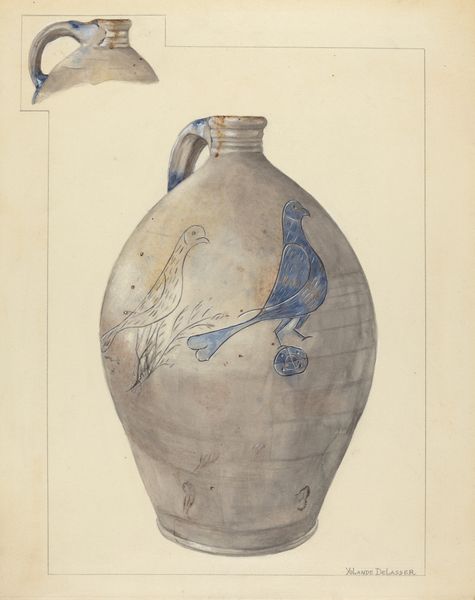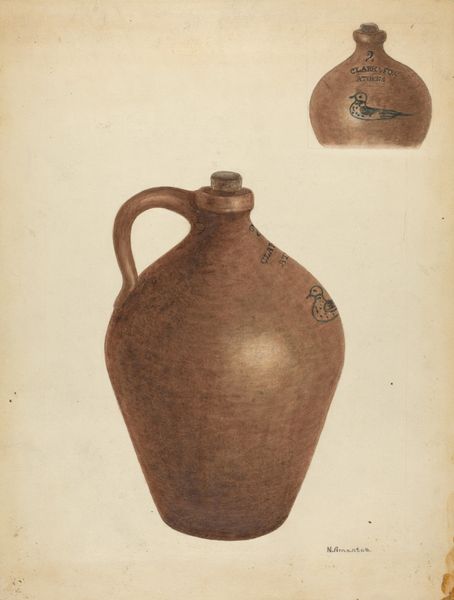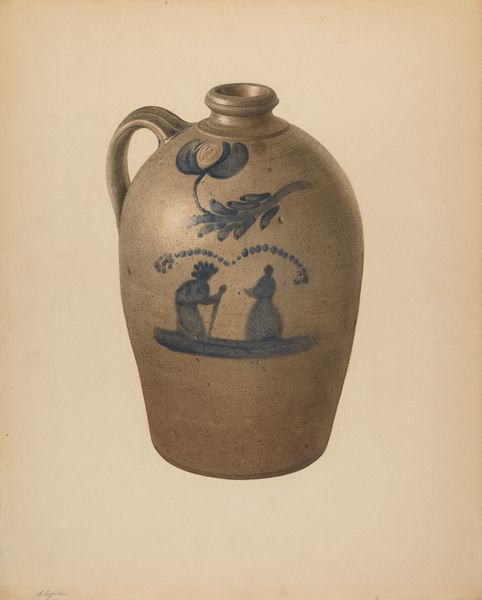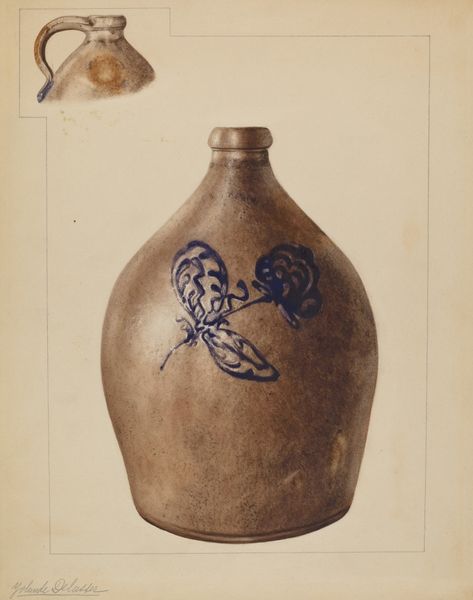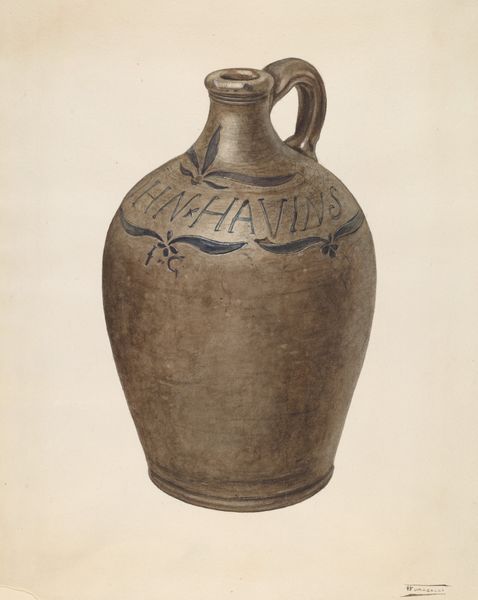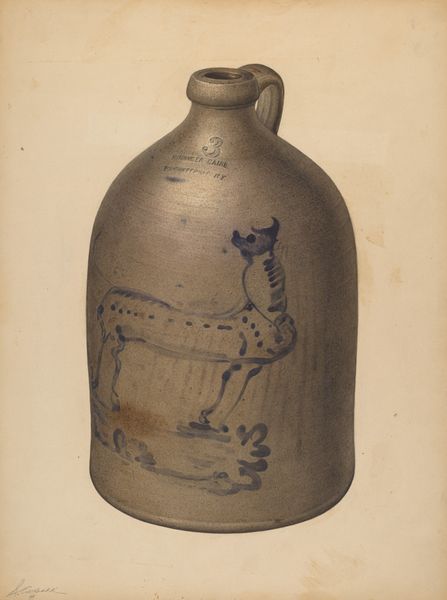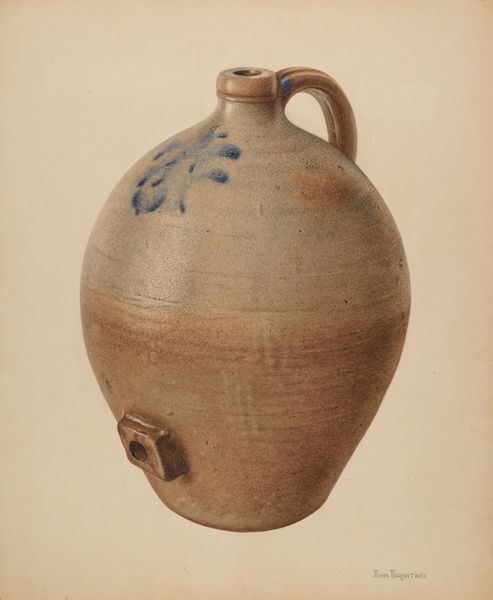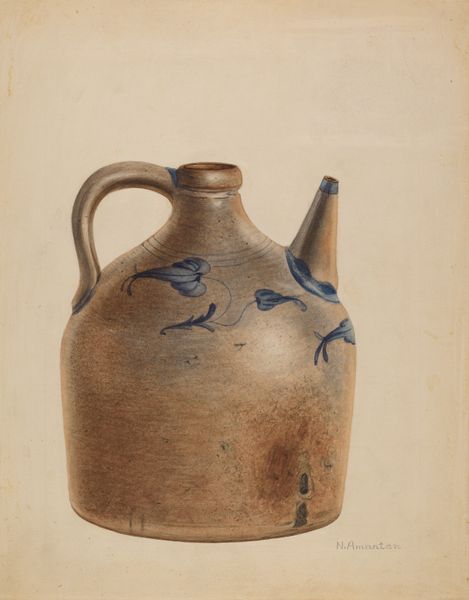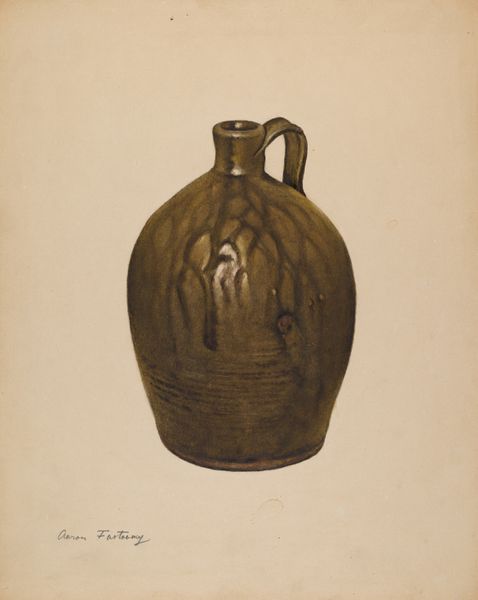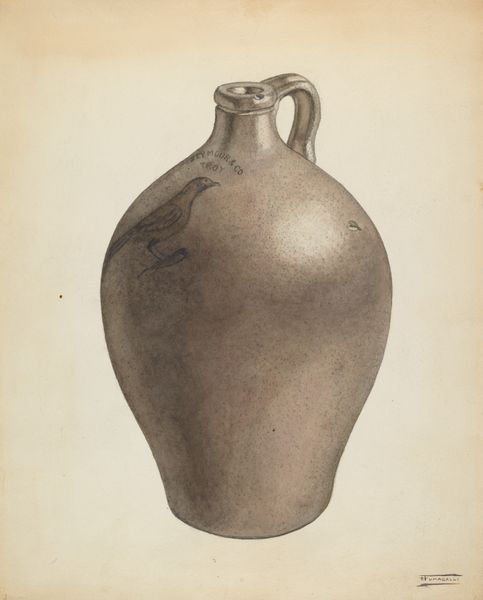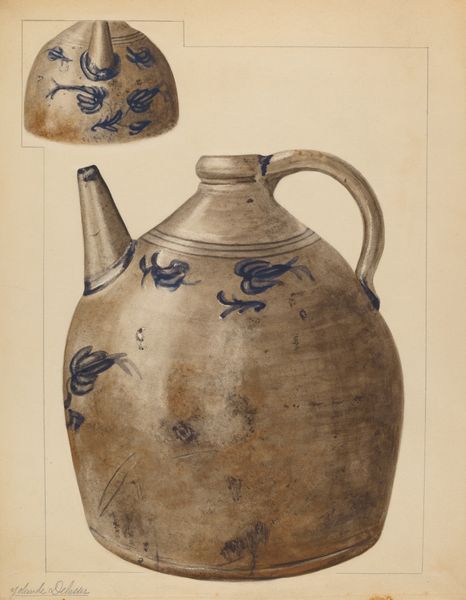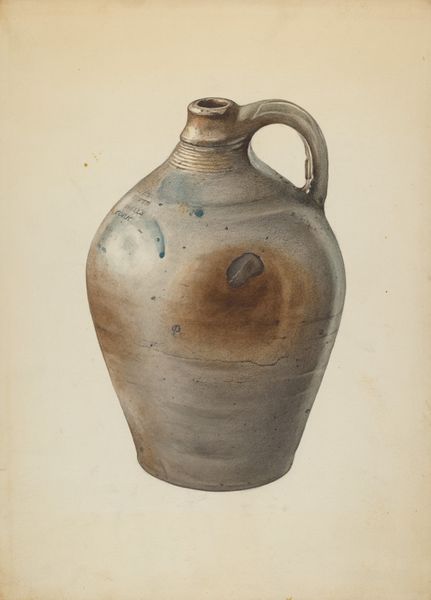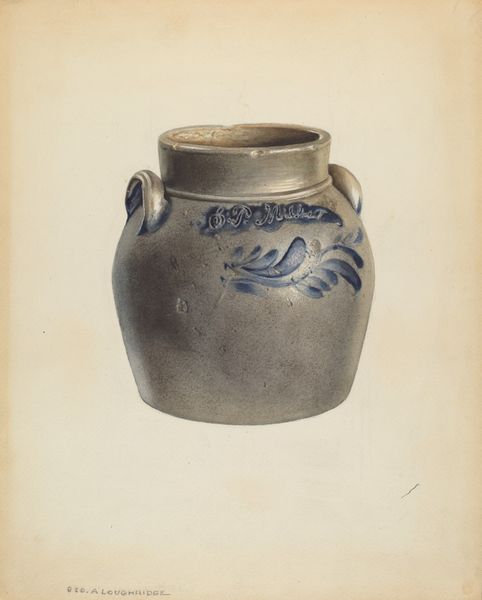
drawing, paper, watercolor, ink, pencil
#
drawing
#
charcoal drawing
#
paper
#
watercolor
#
ink
#
pencil
#
watercolour illustration
#
academic-art
#
watercolor
Dimensions: overall: 50.6 x 37.2 cm (19 15/16 x 14 5/8 in.) Original IAD Object: 15" High 10" Dia
Copyright: National Gallery of Art: CC0 1.0
Editor: This is "Earthenware Jug," made around 1937, created with watercolor, ink, pencil, and charcoal on paper by L. Vladimar Fischer. I'm struck by how this humble object, a simple jug, is elevated through the delicate rendering. What stories do you think it holds? Curator: This seemingly simple jug offers a compelling lens through which we can examine early 20th-century American industry and artistic representation. Consider the context: Fischer is capturing an everyday object, likely mass-produced. But instead of celebrating industrial progress, he meticulously depicts a handmade aesthetic. It raises questions: Is this a commentary on the loss of craftsmanship due to industrialization? Or is it perhaps related to gendered labor of the time? What does it mean to see "D.S. Perrey & Co., West Troy" inscribed on the jug itself? Editor: West Troy— so, this is specifically located. Is the jug's place of origin significant? Curator: Absolutely. West Troy, New York, was a hub of industry in the late 19th and early 20th centuries, experiencing significant changes regarding class and labor. This artwork provides tangible insight into working-class history. The jug, therefore, becomes more than just a vessel. It is an emblem of a time and place marked by both innovation and profound social shifts. Can art change perception of an ordinary vessel into a signifier of political change? Editor: Definitely! Seeing the jug as part of the working class history shifts my entire perspective of it. Curator: It also makes you think how identity gets shaped by industry. Thinking about art and history together, makes even simple drawings seem more dynamic.
Comments
No comments
Be the first to comment and join the conversation on the ultimate creative platform.
